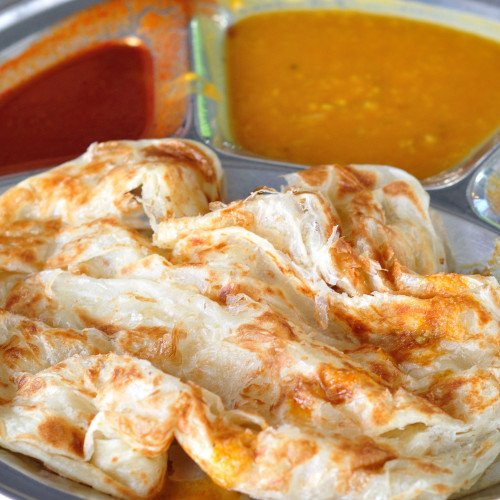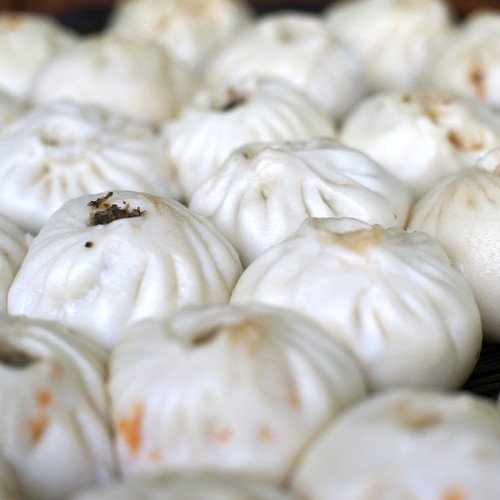Do you like Roti Canai over Bun?

Roti Canai
Roti canai (pronunciation: /tʃanaɪ/), or roti chenai, also known as roti cane (/tʃane/) and roti prata, is an Indian-influenced flatbread dish found in several countries in Southeast Asia, including Brunei, Indonesia, Malaysia and Singapore. It is usually served with dal or other types of curry, but can also be cooked in a range of sweet or savoury variations made with a variety of ingredients such as meat, egg, or cheese. Roti canai is a popular breakfast and snack dish in Malaysia, and one of the most famous examples of Malaysian Indian cuisine. It is said that the dish was brought over from India by Indian Muslims, also known as "Mamaks" in Malaysia, and is served in Mamak stalls located in both rural and urban Malaysia.It is considered as a variation of parotta and does exist in Kerala, India. The closest kin to roti canai is believed to be Malabar parotta.
Statistics for this Xoptio

Bun
aozi (Chinese: About this sound包子), or bao, is a type of yeast-leavened filled bun[1] in various Chinese cuisines. There are many variations in fillings (meat or vegetarian) and preparations, though the buns are most often steamed. They are a variation of mantou from Northern China. Two types are found in most parts of China and Indonesia: Dàbāo (大包, "big bun"), measuring about 10 centimetres (3.9 in) across, served individually, and usually purchased for take-away. The other type, Xiǎobāo (小包, "small bun"), measure approximately 5 centimetres (2.0 in) wide, and are most commonly eaten in restaurants, but may also be purchased for take-away. Each order consists of a steamer containing between three and ten pieces. A small ceramic dish for dipping the baozi is provided for vinegar or soy sauce, both of which are available in bottles at the table, along with various types of chili and garlic pastes, oils or infusions, fresh coriander and leeks, sesame oil, and other flavorings. They are popular throughout China.